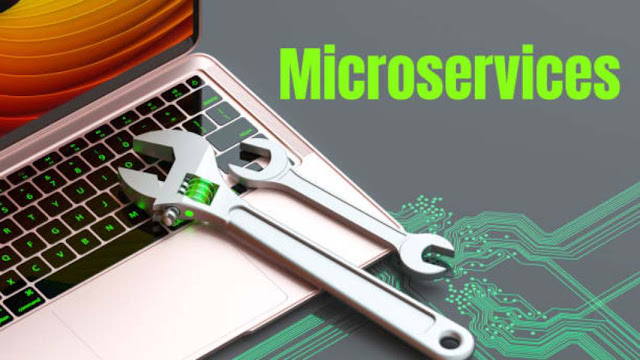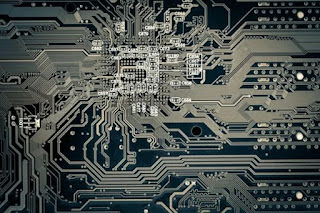Microservices Technolog

Microservices Technology: Revolutionizing the Beauty Industry
Introduction:
Microservices technology has emerged as a powerful
architectural approach in software development, enabling businesses to build
scalable and flexible applications. Beyond the realm of technology,
microservices are also significantly impacting various industries, including
beauty. This article explores the intersection of microservices technology and
the beauty industry, highlighting how this innovative approach transforms
beauty businesses, enhances customer experiences, and drives innovation.
Agile and Scalable Beauty Applications:
Microservices provide the foundation for building agile and
scalable beauty applications. By breaking down complex systems into more minor,
independent services, microservices allow for individual components to be developed,
deployed, and scaled independently. In the beauty industry, this agility is
particularly valuable, as it enables businesses to quickly adapt to changing
market demands, launch new features, and incorporate emerging trends.
Microservices architecture supports the rapid development and deployment of
beauty applications, fostering innovation and keeping businesses at the
forefront of the industry.
Enhanced Customer Experiences:
Microservices technology enhances customer experiences in
the beauty industry by enabling the development of personalized and seamless
applications. Beauty businesses can create modular and interconnected
components that cater to specific customer needs with microservices. For
example, a beauty application could offer personalized skincare recommendations
based on individual skin types, preferences, and concerns. Microservices
architecture allows real-time data analysis and integration with various
external systems, enabling a personalized and context-aware customer experience.
Microservices technology enhances customer satisfaction and loyalty by
providing tailored recommendations and seamless interactions.
Flexibility and Customization:
Microservices technology empowers beauty businesses to offer
customizable products and services to their customers. With a microservices
architecture, businesses can create independent services that cater to specific
beauty needs, such as personalized makeup consultations, virtual try-on
experiences, or customized skincare routines. Customers can mix and match these
services to create a personalized beauty regimen that aligns with their unique
preferences and goals. Microservices architecture enables beauty businesses to
cater to diverse customer demands, fostering a deeper level of engagement and
customization.
Seamless Integration of Third-Party Services:
Microservices facilitate the seamless integration of third-party services and APIs, enriching beauty applications with enhanced functionality and features. Beauty businesses can leverage microservices architecture to integrate external services, such as payment gateways, social media platforms, or AI-powered recommendation engines. For example, a beauty application could integrate with a virtual makeup try-on platform to offer customers a realistic and interactive try-on experience. The modular nature of microservices architecture makes incorporating and maintaining integrations easier, enabling beauty businesses to leverage the best tools and services available in the market.
Increased Collaboration and Innovation:
Microservices technology promotes collaboration and
innovation within the beauty industry. By breaking down monolithic applications
into more minor services, different teams within a beauty organization can work
independently on specific components. This distributed and modular approach
fosters greater team collaboration and creativity, allowing them to innovate
and iterate rapidly. A microservices architecture also enables the adoption of
DevOps, where development and operations teams work closely together, leading
to faster deployment cycles and continuous improvements. The collaborative
nature of microservices drives innovation, accelerates time-to-market, and
enables beauty businesses to stay competitive in a fast-paced industry.
Scalability and Resilience:
Microservices architecture provides scalability and
resilience for beauty applications. Each microservice can be scaled autonomously
based on demand, allowing businesses to handle peak usage periods effectively.
For example, during a product launch or a seasonal promotion, the corresponding
microservice can be scaled up to accommodate increased traffic and ensure
optimal performance. Additionally, the isolation of microservices enhances the
resilience of the overall system. If one microservice encounters an issue, it
does not affect the entire application, as other services can continue to
operate independently. This fault-tolerant architecture ensures that beauty
applications remain available and responsive, even in unexpected challenges.
Continuous Delivery and Iterative Development:
Microservices architecture aligns well with continuous
delivery and iterative development principles, allowing beauty businesses to
deliver new features and improvements to their applications more frequently.
Each microservice can be deployed independently, enabling teams to release
updates without disrupting the system. This iterative approach facilitates
rapid experimentation, A/B testing, and quick feedback cycles, leading to
faster innovation and continuous improvement. The ability to deploy changes
independently also reduces the risk of introducing errors or regressions, as
changes can be isolated and tested before being rolled out to production
environments.
Conclusion:
Microservices technology is revolutionizing the beauty
industry by providing a scalable, agile, and customer-centric approach to
application development. By leveraging microservices architecture, beauty
businesses can deliver personalized experiences, enhance customer satisfaction,
and quickly adapt to changing market demands. The flexibility, customization,
and seamless integration capabilities of microservices enable businesses to
offer innovative products and services that cater to individual beauty needs.
Collaboration, scalability, and resilience are intrinsic benefits of
microservices, fostering collaboration among teams, supporting rapid growth,
and ensuring application availability. As the beauty industry continues to
evolve, microservices technology will drama a vital role in lashing digital
transformation, empowering beauty businesses to stay competitive and deliver
exceptional experiences to their customers.



Comments
Post a Comment